This Just In: HP Veer 4G for AT&T
by Brian Klug on May 9, 2011 8:49 PM ESTIt's going to be a busy week for smartphones. We've got Google I/O, a bunch of finishing touches on the Droid Charge review, the Infuse 4G on its way, and early this morning yet another new device hit the doorstep. This time it's the HP Veer 4G which is slated to launch on AT&T May 15th.
We've been WebOS fans for a while now and are looking forward to HP's refresh of the entire WebOS lineup. Previous hardware was getting long in the tooth and unfortunately we haven't been able to take a look at WebOS 2.x until now. We're used to seeing flagship devices launch first and then smaller, thinner, lighter versions come later, but it appears HP wants to get new hardware out there as fast as possible, and is starting things with the Veer 4G.
The Veer is tiny, the device's outline is about the size of a credit card. Next to the AT&T Palm Pre Plus, the Veer looks very small. Compared to the 4.3-inch devices I've been carrying and reviewing for so long now, its size is positively mind-blowing.
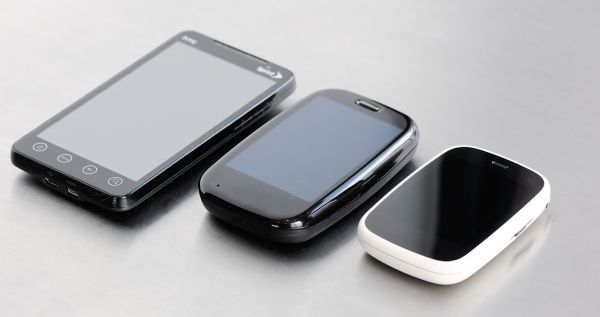
Left to right: HTC EVO 4G, AT&T Palm Pre Plus, HP Veer 4G
The Veer is essentially a ground-up refresh of the Palm Pixi. The two share the exact same 2.63 inch diagonal 320x400 sub HVGA LCD display and button-less gesture area. Where the two differ is surrounding form factor - the Veer abandons the candybar format in favor of the portrait slider carried by the original Pre, and as a result has a much smaller outline. The Veer will come in both black and white.
In addition the Veer is built around a much speedier SoC, Qualcomm's 800 MHz MSM7230 with Adreno 205 graphics, same as we first saw in the T-Mobile G2. It isn't quite as fast as this generation's 1 GHz frontrunners like Hummingbird or even MSM8x55, but MSM7230 makes the device substantially faster than the Palm Pre Plus I carried around for a while. On paper the Veer should perform better than the Pre Plus and Pixi, but behind the Palm Pre 2 and HP Pre 3. My mental comparison point is the Palm Pre Plus, and compared to it, everything on the Veer is smoother and faster.
The other big differentiator is the move from a 2 MP to 5 MP camera, though the optical system is still fixed focus. Thankfully capture is still incredibly speedy - you can still mash the capture button and snap a bunch of pictures in rapid succession.
We've run a few of our web benchmark tests from the usual suite and have results, but expect to see a lot more in the full review.
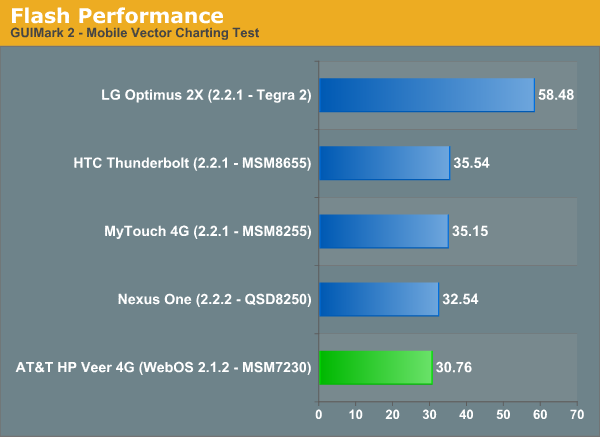
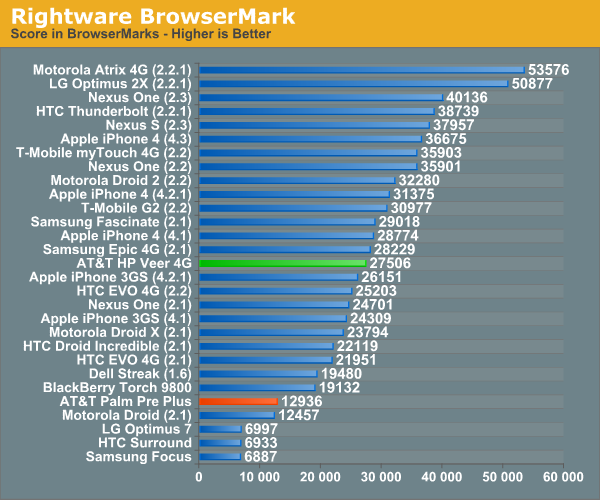
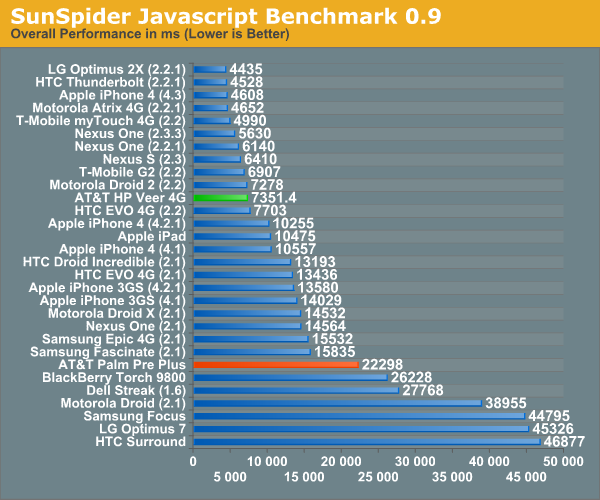
First impressions with the HP Veer are overall very good. Build quality is solid, as the Veer has a very sturdy feeling slider with none of the "oreo effect" that plagued the original Palm Pre for so long. In addition, the Veer also lacks the LCD pressure distortion that used to occur when the slider was closed sharply. The entire mechanism feels snappy and precise with absolutely no play. Buttons are clicky and responsive, nothing suffers from miniaturization thankfully. I've been using the Veer all day today with my own SIM inside (just like I do for every phone when appropriate) and thus far am impressed with how useable the whole thing is despite the miniaturized keyboard and relatively small display.
The only compromises the Veer does make as a result of its miniscule size are lack of a microUSB port and 3.5 mm audio jack, and a non-replaceable 910 mAh (3.3 Whr) battery. For USB connectivity and audio out, there are two proprietary magnetic adapters very reminiscent of Apple's MagSafe. We'll subject the Veer to our suite of battery life tests immediately and find out how much stamina the Veer has with such a small battery.
We've taken a bunch of photos of the Veer alone and alongside its larger predecessor and put them in a gallery for your perusal. Stay tuned for the full review later this week.


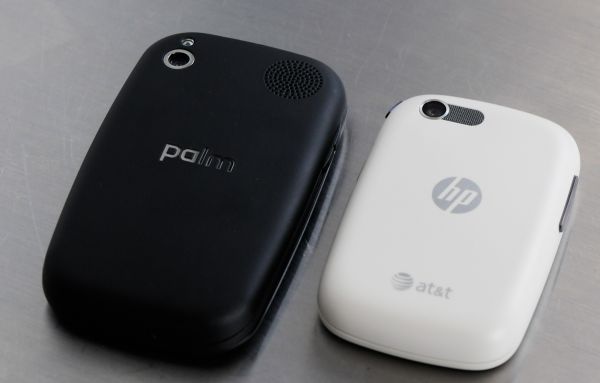















28 Comments
View All Comments
jramskov - Tuesday, May 10, 2011 - link
Well, hello HP, heard that Europe standardized on MicroUSB a year ago? http://arstechnica.com/telecom/news/2009/06/10-com...I also think it's too thick, 15.1mm (0.59 in) according to wikipedia. That's almost twice as thick as the new Samsung Galaxy S2 and quite a bit more than my HTC Desire. Thickness is quite important IMHO when it comes to carrying it in your pocket. My HTC Desire is relatively big (3.7" screen) but it's thin enough for that to rarely be a problem.
I have no numbers on this, but I'm pretty sure most smartphones sold are without a physical keyboard. I'm very surprised they haven't launched a model without a physcial keyboard. I think a lot of people simply will not consider a smartphone with a physical keyboard. I'm one of them.
sicofante - Wednesday, May 11, 2011 - link
Exactly. I also wonder how are they planning to sell this in Europe. No microUSB charger is not an option here, AFAIK.Maybe there's some hope and they're forced to make an European version with microUSB.
Penti - Wednesday, May 11, 2011 - link
They include an adapter so it's probably fine for EU. They should start selling it here any time. You can charge the phone through the USB. You can use 3.5mm headphones with the included adapter. Apple does fine with their proprietary connector here so. Neither is there anybody forcing them to use MicroUSB directly or indirectly.NCM - Tuesday, May 10, 2011 - link
Here's a product that's technically interesting, a quality that always appeals to AT readers. But is the world looking for a smartphone with a tiny 320x400 pixel screen?I suspect that like the smoothly rounded stone it resembles it'll sink with barely a ripple under the water of the smartphone market at large.
softdrinkviking - Tuesday, May 10, 2011 - link
it's obviously not targeting the smartphone market.this phone is for people who want something pocketable that can check mail and consult the web in a pinch.
as long as it's priced accordingly, it should do fine.
NCM - Tuesday, May 10, 2011 - link
There are three cell phone market segments:- Plain ol' cell phones. You call me, I call you, that's it.
- Feature phones Keyboard, possibly a few other amenities, no web or email.
- Smartphones. Capable processors, reasonable amounts of onboard storage, web, email and apps.
The Veer is far more than a feature phone, but far less functional (tiny screen, etc.) than mainstream smartphones. It has a browser and email, can presumably run WebOS apps. We don't know how much memory it has, but there's a reasonably speedy single-core processor.
The Veer is clearly not a mere feature phone, but equally it's a lesser creation than other smartphones. So does the Veer fit into a narrow band at the lower end of the smartphone, a band that nobody else seems to think exists?
Performance appears to be quite good, but performance in the service of what? It doesn't matter how fast the Veer's 4G serves me up a web page, at 320x400 I don't care. Same for email. On the other hand you're not going to buy a Veer just for texting.
Within reasonable bounds the Veer's price doesn't matter all that much. By now we all know that handset price is the least part of a smartphone's total cost of ownership.
Perhaps I just don't get it, but I'm afraid that not many other people will either. Who is the Veer aimed at?
softdrinkviking - Tuesday, May 10, 2011 - link
Since you have to pay for the data anyway, why not get the biggest, fastest phone available?Yeah, I get that, but maybe you don't want to tote around a giant contraption in your pocket, but you want to check your email?
You can call it whatever you want, feature or smartphone or whatever, it doesn't change what it does; which is offering a better feature phone experience while fitting nicely into a pocket.
If you are wondering who this is aimed at, I think you need look no further than that.
ioannis - Tuesday, May 10, 2011 - link
First of all, regarding your 1st phone category, I don't have your number to call you :-Psecondly, Veer's screen is small, BUT unlike the keyboardless counterparts you people seem to compare it with, it's not 'waisted' by an on screen keyboard when you type things (probably do that more often in WebOS that other OSs, due to JustType™). I think the keyboard is kind of a must for something like the Veer.
I'm actually excited about the Veer. Seems to compare to the iPhone 4 (at least with its original iOS version) in terms of performance, which is very impressive. From what I've seen, it feels mega smooth and I really like its form factor. Also WebOS is the best mobile platform in my opinion and if HP manages to bring it to the PC, as they are saying, it will have bright feature.
Penti - Wednesday, May 11, 2011 - link
It's an exciting business or prosumer oriented device according to my taste any way, it's faster then last gen Android phones, it's faster then budget Android phones, fills all the business needs well and is enough consumer oriented for me to say run Spotify on it. For those where entertainment is not the top of the priority list it is a good device I guess. But it's still plenty fast for games and all other entertainment stuff.If you like a bigger screen there is always the Pre 3, but there is still a place for smaller devices. Certainly the combination of Veer, Pre 3 and TouchPad should find a place in business at least, and many consumers too. Certainly is something quite unique to them. They pretty much already has got the look and feel for those devices, got a decent software stack to build from. The touchstone charger is nice feature for work and home too. We shouldn't be kidding ourself that a smart device can last forever on a charge. Certainly not if it sees any use. HP has got a chance here to make something good out of all this.
Rocket321 - Thursday, May 19, 2011 - link
The problem, even if its priced low enough, is that they are also selling you a $79-$99 per month plan with it. If someone could launch a low end smart phone, and sell you a low end voice/data plan to go with it, then these things could sell. The only option right now for such a plan is going with prepaid (e.g. virginmobile) and paying full price for the phone.I agree that if I'm paying crazy money for a data contract I'm going to get the largest, fastest phone I can get and its got to have the ability to hack & free tether as well. My OG Sprint Pre could free tether but I don't know on WebOS 2 if that will happen again.